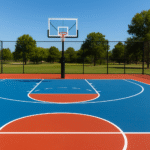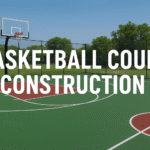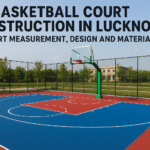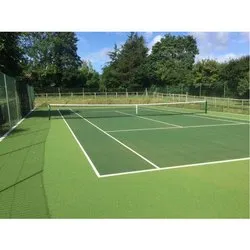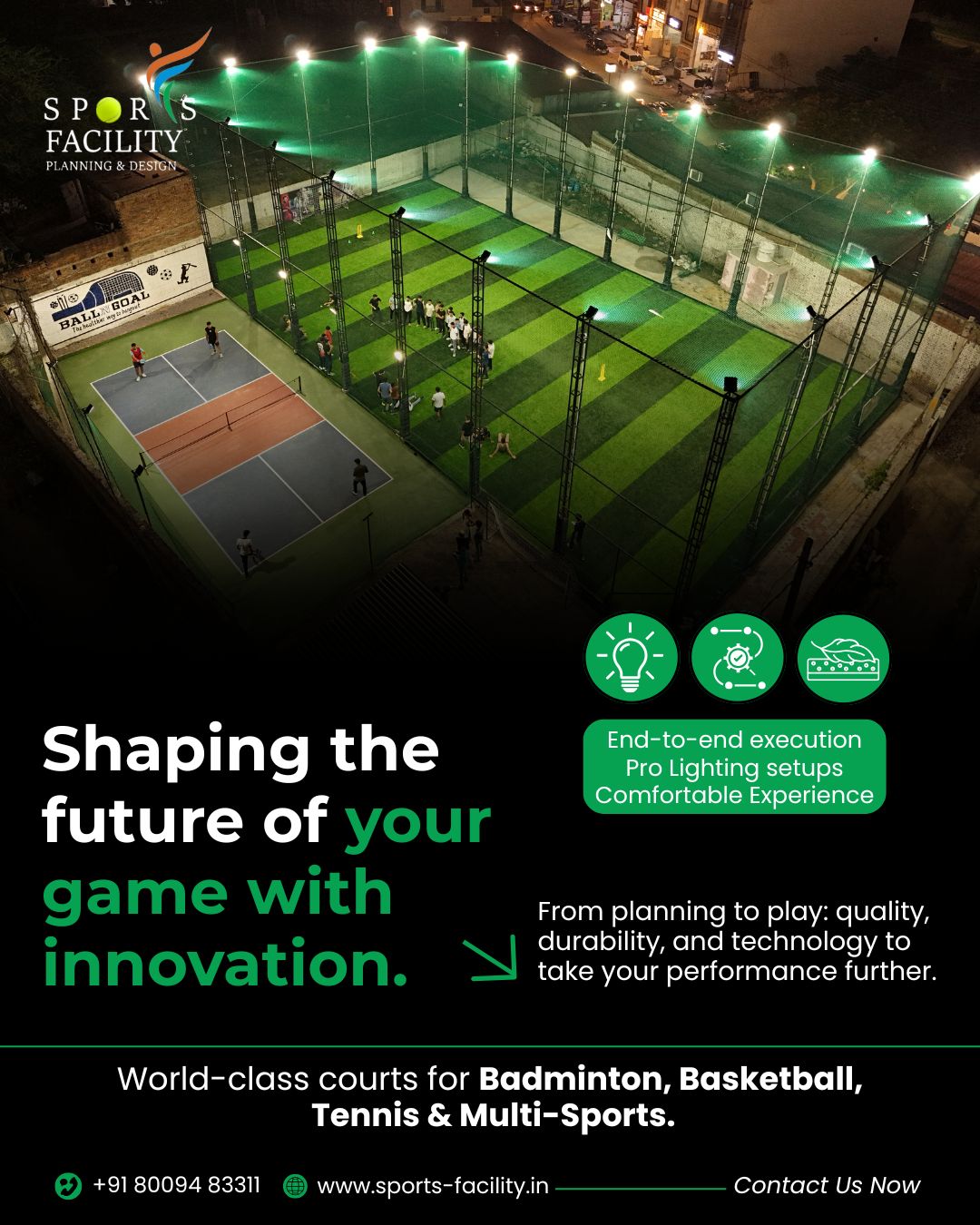ennis is one of the most prestigious and popular sports in the world, and in recent years, its popularity has been growing rapidly across India. With professional tournaments, school competitions, and recreational players rising every year, the demand for quality tennis courts has increased significantly. Whether you are a school, college, sports academy, private club, or even a homeowner, investing in a well-designed tennis court can add immense value. – tennis Court Installation in India.
At Sports Facility India, we specialize in tennis court construction in india, offering end-to-end solutions from design to execution. In this blog, we will guide you through the key aspects of tennis court installation—covering surfaces, costs, materials, maintenance, and important considerations to help you make the right decision.
Why Invest in a Tennis Court?
-
Growing Popularity – Tennis is being played in schools, colleges, societies, and academies, making courts a long-term asset.
-
Professional Training – With India producing talented players, many parents and academies want professional-grade courts.
-
Multi-Purpose Use – With proper design, a tennis court can also be used for pickleball, badminton (outdoor), or recreational activities.
-
Property Value – A tennis court adds significant value to residential societies, resorts, and luxury homes.
Types of Tennis Court Surfaces in India
Choosing the right surface is the most important step in tennis court construction in lucknow. The surface affects playing speed, maintenance, and overall cost. Let’s explore the popular options:
1. Acrylic Hard Court – Tennis Court Installation in India
-
Most commonly used in schools, clubs, and public facilities.
-
Provides consistent bounce and medium-to-fast playing speed.
-
Durable, weather-resistant, and low-maintenance.
-
Popular in India due to affordability.
2. Synthetic Clay Court
- Mimics the look and play of natural clay but requires less maintenance.
- Slower surface, good for developing baseline play and stamina.
- Gentle on the body, reducing risk of injuries.
3. Natural Clay Court
- Traditional clay surface used in Europe and South America.
- Provides slow ball bounce, longer rallies, and requires daily maintenance.
- Less common in India due to water and upkeep requirements.
4. Synthetic Grass Court
- Designed for fast play, similar to Wimbledon-style grass courts.
- Requires minimal maintenance compared to natural grass.
- Less popular in India but chosen for luxury clubs and resorts.
5. Cushioned Acrylic Court
- Provides extra cushioning layer under acrylic surface.
- Reduces stress on joints, making it player-friendly.
- Preferred in professional academies.
Step-by-Step Process of Tennis Court Installation
Building a tennis court is not just about laying flooring. It requires expertise, precision, and quality materials. At Sports Facility India, our process includes:
1. Site Inspection & Planning
-
-
Evaluate land size, slope, drainage, and orientation (north-south is ideal).
-
Prepare customized design based on available area
-
2. Base Construction
- Proper leveling and compaction of soil.
- Laying of sub-base (WBM or concrete) for stability.
3. Surface Installation
- Selection of court surface (acrylic, clay, synthetic grass, etc.).
- Application of cushioning layers (if required).
-
Professional finishing with anti-slip coatings.
4. Accessories & Equipment Installation
- Net posts, nets, fencing, and lighting (if required).
- Seating arrangements for academies or clubs.
5. Final Quality Check
- Testing for bounce, surface smoothness, and durability.
- Handover with maintenance guidelines.
Factors to Consider Before Building a Tennis Court
- Space Availability – Standard court size is 78 ft x 36 ft (plus run-off area).
- Budget – Decide based on long-term maintenance and usage.
- Location & Climate – Choose surface type suitable for weather conditions.
- Purpose – Training, professional tournaments, or recreational play.
- Maintenance – Some surfaces (like clay) require more care than others.
Maintenance Tips for Long-Lasting Tennis Courts
-
Regular cleaning of surface (dust, leaves, debris).
-
Repainting and line marking every 3–5 years (for acrylic).
-
Checking nets, posts, and fencing.
-
Watering and rolling (for clay courts).
Why Choose Sports Facility India for Tennis Court Installation?
-
End-to-End Solutions – From site survey to final court delivery.
-
High-Quality Materials – ITF-approved surfaces and equipment.
-
Expert Team – Experienced engineers and sports consultants.
-
Customization – Courts designed for schools, clubs, hotels, or private villas.
-
Nationwide Service – We have completed multiple projects across India.
Our mission is to build world-class tennis courts that last long, perform well, and provide players with the best experience.
Immediate repair of cracks or damages to avoid bigger costs later.
Conclusion
A tennis court is not just a playing surface—it is an investment in sports, health, and lifestyle. Whether you are a sports academy, a school, or a private property owner, the right tennis court can enhance your facility and attract more players.
At Sports Facility India, we bring expertise, quality, and passion to every project. If you are planning to install a tennis court, get in touch with us today for a free consultation and let’s build the perfect court together.
